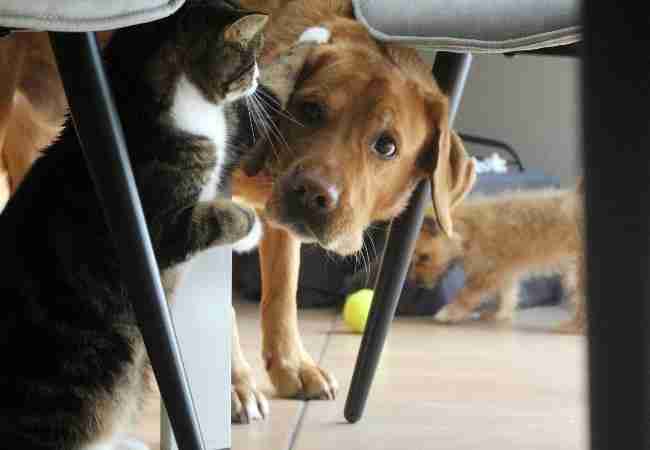
You’ve found a new beautiful house in a lovely neighbourhood close to a good school and workplace, but you are also a pet owner, and on top of all relocation-related tasks, you need to consider not stressing your beloved pet along the way. Every minor disturbance in a pet’s environment can make it anxious. Pets don’t understand concepts like house moving, and many of them, especially those whose owners are often away from home, are prone to develop a fear of abandonment.
Luckily, moving with pets can become less stressful both for you and your family’s furry friend if you know what to do. Whether you have a cat, dog, or pet bird, you will find some very useful tips for moving with pets in this article.
Tips for Moving With Pets
Although there are multiple things you can do to reduce the stress related to moving, when you already have many things on your to-do list, it is easy to forget something. That is why we have prepared a few simple tips for moving with pets to help you move seamlessly.
Preparation
Prepare a pet travel kit with everything your furry friend will need during the packing and unpacking process, which can sometimes take days. This should include things like enough food and treats, toys, grooming tools and cat litter. Make sure you have it on hand at all times.
Contact the Vet
If you are moving out of the area or relocating to another country, check with your veterinarian first. You need to take your pet’s records with you and prescriptions for any medications they require. They may even recommend a good vet at your new location.
Keep Them Away From the Moving Process
When you are moving house with pets, try to reduce the action and noise to the minimum. While you can’t stop packing and moving boxes, you can keep your pet in a quiet room, ensuring they are comfortable. Check on them regularly. Pets have a sense of routine, so if possible, walk and feed them when you usually do. You can also opt to leave your pet with a friend or in a daycare centre.
Travel With Your Pet
When you are ready to drive off, take your pet with you in the vehicle. If you have a cat or small dog, put them in a carrier. You can throw a blanket over the carrier to soothe the animal and hide the change of environment. Travelling with bigger dogs should happen in a kennel in the back of the car. You may need to put some seats down.
Update Their Information
When you are changing your address, don’t forget to contact the database company your pet is registered with and update their microchip information. Check the government regulations for more information.
Moving With Specific Animals
Check our recommendations below for a stress-free moving house process with a specific animal:

Moving House With a Dog
When you are moving house with a dog, avoid washing their bedding for a while, as the familiar scent will be soothing to them during the relocation. If the journey to the new house is a particularly long one, make sure you stop for toilet breaks. Also, don’t forget to research local laws in the new area/country concerning dogs.
Moving House With Cats
The most important thing you should do when moving house with a cat is to surround it with familiar toys and accessories and provide it with a comfy yet reliable carrier. Don’t let your cat outside its carrier during the journey, as you will probably end up with scratched hands and upholstery. Also, feed your cat only a bit before driving off, otherwise, it may get sick.
Moving With a Pet Bird
When you are moving with a pet bird, be mindful that birds are sensitive to temperature changes. Regulate the temperature in the car and keep your bird away from direct sunlight. Also, to make the relocation of your pet bird more comfortable and less stressful, you can prepare a few pieces of fresh fruit or vegetable to give your feathered pet during the trip.
Settling Your Pet in the New Property
As soon as you arrive at your new house with your pet, unpack its belongings and place them in one room. Let your pet rest there with his or her bedding and toys. It will be good to gradually introduce your animal to its new home by letting it wander into only one or two rooms. Keep in mind any windows through which your pet can escape.
Now that you are in a new place try to maintain the same routine as before. This will help the animal adapt better and quicker. If you need to be away from the house the days following the move, consider asking a friend to visit and keep your pet company or arrange a pet-sitting service.
If you are a dog owner, another useful thing would be to go around your new neighbourhood and look for suitable parks and walking paths for your pet. Even if your dog is docile, keep it on a leash for at least a couple of weeks until it becomes accustomed to the area.
Takeaways
- Moving house can be stressful for a pet, but taking some measures can ease the process.
- Ahead of the relocation, prepare a travel kit, ensuring you have enough food, water and some of your pet’s familiar toys.
- Taking your pet with you in the vehicle when you are travelling to the new location is better.
- To help your pet adapt better, surround it with familiar items and gradually introduce it to the entire property.










